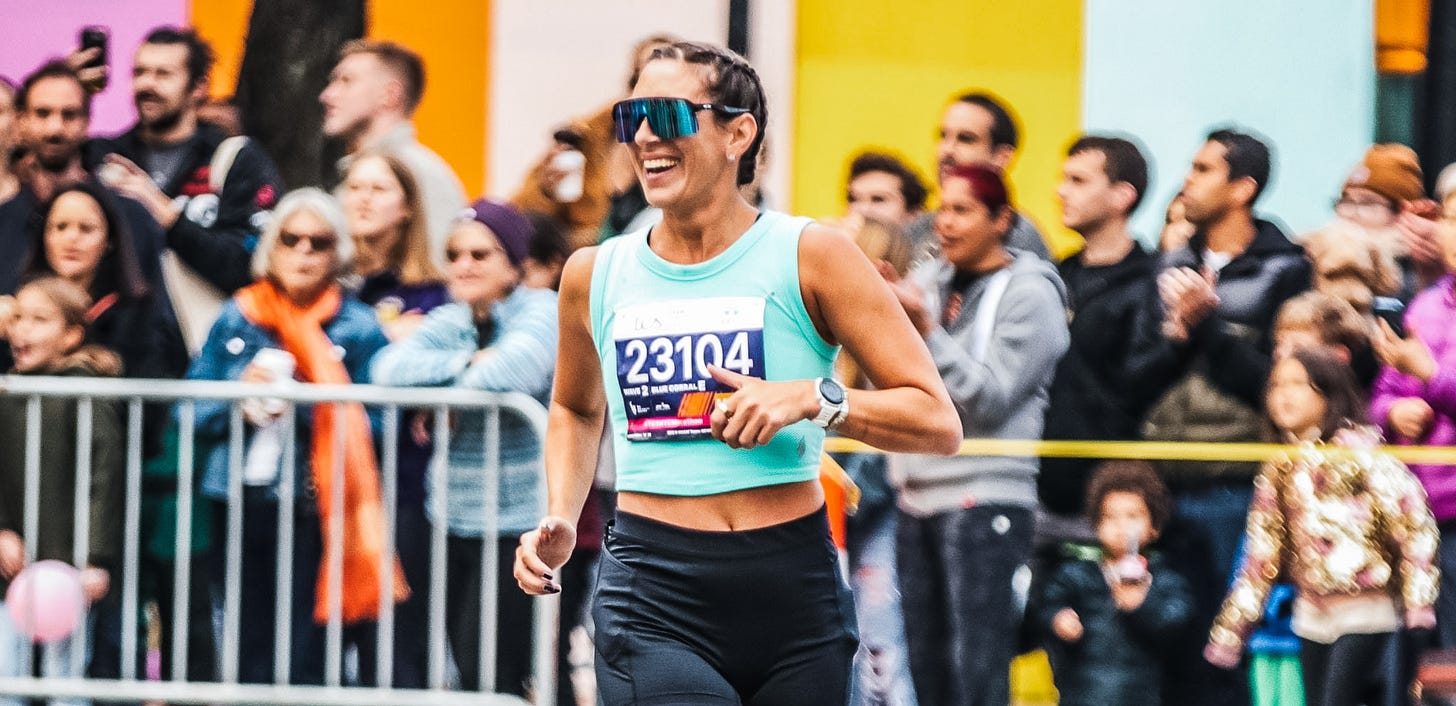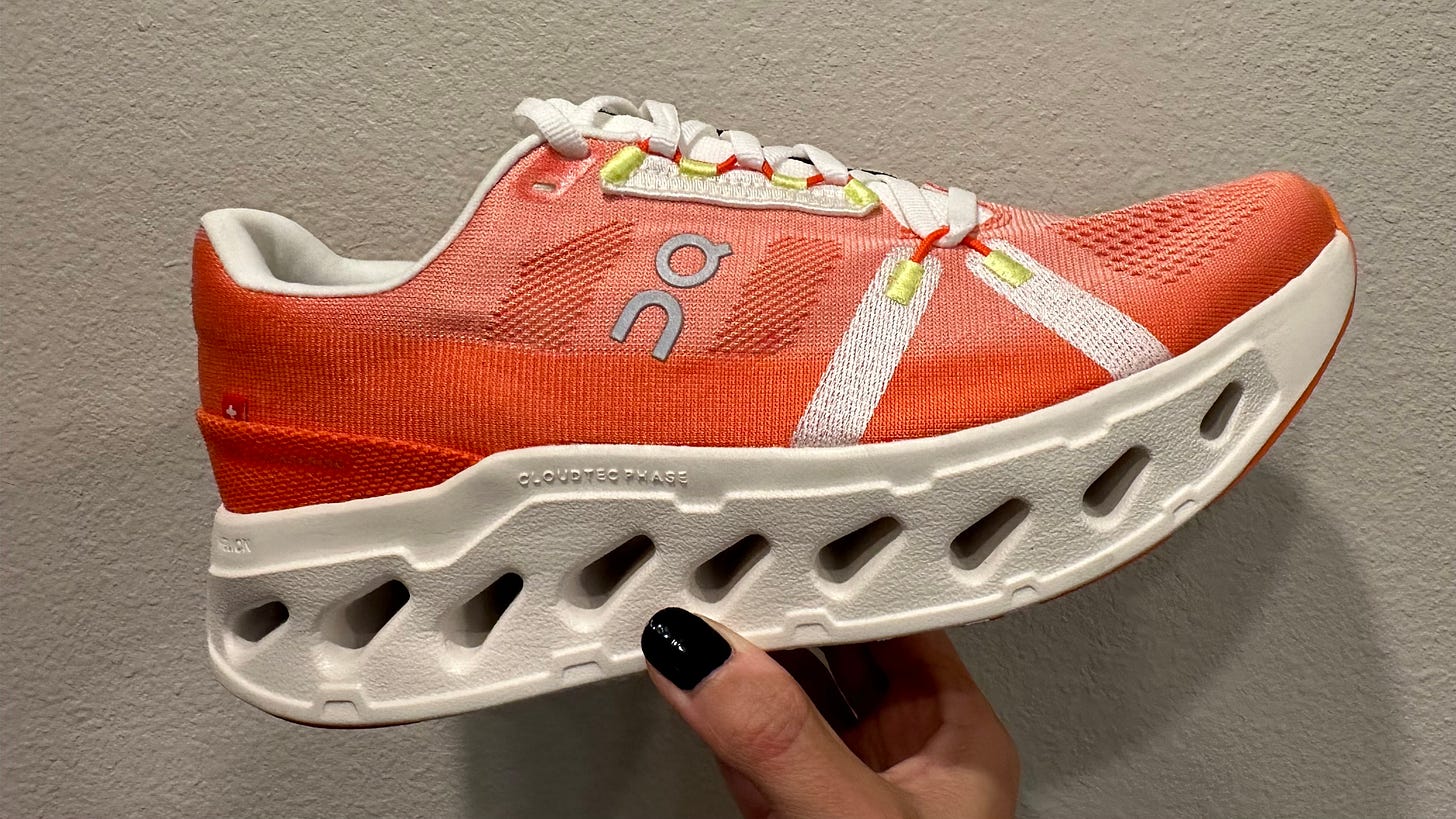I had so much fun during this year’s New York City Marathon, I knew in the moment that I was setting myself up for an emotional crash of epic proportions. When the vibes are that high, it’s inevitable that the pendulum might swing just as far in the other direction.
The post-race blues are a very real type of temporary depression that can occur after a race—even after a good one! The use of the word “depression” makes it sound a little more serious than it is. Unlike major depressive disorder, or clinical depression, the post-race blues qualify as situational depression, also called short-term depression or clinically known as “adjustment disorder with depressed mood,” because it generally doesn’t last very long. In fact, as soon as you adjust to the change that caused the sadness, you’ll be fine.
That “change,” in relation to racing, has a lot to do with your brain chemistry. When you’re training consistently, your body is pumping out neurotransmitters like endorphins, which act as natural pain relievers, and dopamine, which plays a role in pleasure and motivation. Exercise also triggers the release of oxytocin, a hormone that increases your pain threshold and has an anti-anxiety effect, as well as serotonin, a chemical that helps stabilize your mood and well-being. Plus, exercise increases the level of brain-derived neurotrophic factor (BDNF), a molecule that helps the brain produce new neurons, or brain cells, specifically in the hippocampus, the part of the brain that is deeply involved in emotional regulation. All good things!
But when you’re done with the race and the feel-good effects of all those natural mood-boosters wear off, it can feel like you emotionally just fell off a cliff. It’s not actually that dramatic: BDNF levels fell below baseline levels three days after a marathon, a 2021 study published in Frontiers in Physiology determined, but those same researchers found that marathoners’ moods were still elevated compared to sedentary people three days post-race in a 2020 study published in the Journal of Psychiatric Research. (More research needs to be done to evaluate how BDNF is affected between 72 hours and 3 months after prolonged exercise.)
Whatever’s going on inside your brain, you do need to adjust to a new post-race reality. For four to six months, your life has likely been dictated by marathon training—it affects your social life, your nutrition, your sleep, etc. And then it’s just…done. Of course you’d need a minute to reorient yourself without that north star.
Respect the adjustment period. Use it as a time to reflect on what went well (or wrong) on race day, and how that can inform your training moving forward.
And during that adjustment period, it’s totally normal to feel a little lost, a lack of motivation to run, yearning for something to look forward to, feeling eager to set a new goal, feeling down, anti-social, sad, or disappointed (and this is all true even if you hit your race goal!).
Adjustment periods like this can be uncomfortable—and people generally don’t like discomfort. That’s why so many people cope with the post-race blues by immediately signing up for another race. Don’t do that! Signing up for another race before you’ve even processed the first one is sort of a cop-out, in that it puts you in this cycle where the only way you know how to emotionally deal with the post-race blues is by…running more.
Respect the adjustment period. Use it as a time to reflect on what went well (or wrong) on race day, and how that can inform your training moving forward. Get curious about your training load, stress levels, sleep, fuel, pacing—all the things that affect the lead-up to the race and the race itself. No matter the outcome of the race, revisit your goals—if you achieved them, how can you build on them? If you didn’t, what can you change to bring them within reach?
Use the post-race blues as a launching pad into time off from structured training. It’s so important to take the appropriate amount of time off after a big race so your body can heal—even if you didn’t race at 100 percent, but too many people think of this time off as a punishment (“I’m not allowed to run!”). Try reframing it as a chance to enjoy some normalcy and do the things that fall by the wayside during training.
This period is crucial to later success (I like Jason Fitzgerald’s and Matt Meyer’s suggestion to rebrand this as a “preseason”). It’s when you build your aerobic base, which acts as the foundation for your training once you do have another race in mind. It’s when you can prioritize other types of exercise, like strength training, mobility, and flexibility, which will allow you to get the most out of your running.
Remember: You can’t be at peak fitness all the time. This down time allows you to come back and push your limits once again. The post-race blues are just a sign that you care and you’re invested in your performance. It’s OK to mourn the end of that training cycle—allow yourself that brief moment (I promise it will be brief!), then channel that energy into the next stage of your journey.
the rundown
On Running Cloudeclipse
I love a shoe with a massive stack height, and On’s new Cloudeclipse ($179.99) boasts its highest yet. The Cloudmonster and the Cloudsurfer were both more maximal shoes from the brand, but they just didn’t do it for me (I almost always feel like On shoes are too firm). The Cloudeclipse combines a double layer of CloudTec Phase cushioning with Helion Superfoam to create their most cushioned shoe yet, and it actually did feel softer than I expected on step-in. Maybe it’s the lack of a traditional Speedboard; this shoe has a piece of flexible plastic on the bottom that the brand is calling a Speedboard, but it doesn’t feel as rigid as other styles. But it’s definitely not as plush or soft as other maximally cushioned shoes I like, either, so I’m not 100 percent sure where this one will fit into my rotation—I’m getting daily trainer versus long run vibes (think: Adidas Boston versus New Balance 1080).
Recovery Strategies and Devices: Fundamentals or Icing on Top of the Cake?
We’re all happy to buy into the latest recovery tech on an Instagram rec, but this 2023 review published in Sports attempted to sort the legit tools from the overhyped ones. The study authors found that the evidence for foam rolling, compression garments, cryotherapy, photobiomodulation, hydrotherapy, and active recovery was positive, while it was more mixed for sauna, recovery boots/sleeves, occlusion cuffs, and massage guns. They also said prior beliefs and expectations about recovery strategies can supersede negligible recovery benefits—AKA the placebo effect is real, so if you’re 100% set on installing a sauna on your roofdeck, you do you. But the most important takeaway from this study is the reminder that none of these are meant to replace the fundamentals of recovery: sleep, nutrition, and periodization.
Why Is YouTube Obsessed with Running Marathons on Zero Training?
I stumbled across this Outside article this weekend, and I’m so glad I haven’t actually seen any of these videos on my own social media because they would light. me. up (not in a good way). It’s all about how social media influencers have started a trend of posting videos of them running long distances without training, and it’s emblematic of one of my biggest problems with running social media: There are so many influencers out there who are really good at gaming the algorithms, but lack the expertise and training to actually provide their followers with credible advice. I get that this kind of content has entertainment value, but it also normalizes stupid decisions that can actually hurt people. Follow who you want, but be careful who you take advice from.
Will AI Soon Replace Nutritionists and Dietitians?
Wheeew, I don’t know how I feel about this one. Researchers posed the same commonly asked nutrition questions to a group of dietitians and ChatGPT in a 2023 study published in the Journal of Nutrition and Metabolism and determined that “none of the answers from the dieticians had a higher average score than ChatGPT.” The answers were graded by other dietitians and subject-matter experts, and ChatGPT outperformed the dietitians for the overall scores in five of the eight questions. That may be the case in an objective experiment, but I still think working with humans who can understand the nuance of an individual’s nutrition issues will always be a better choice than listening to a computer. (I’d love to see a similar study done with fitness experts or coaches.)






